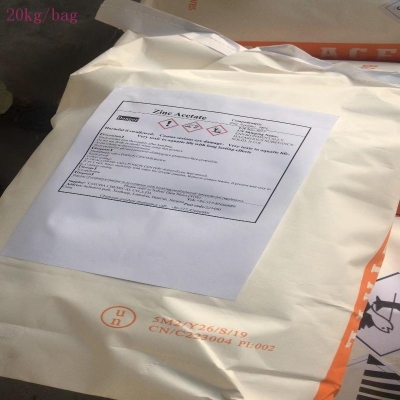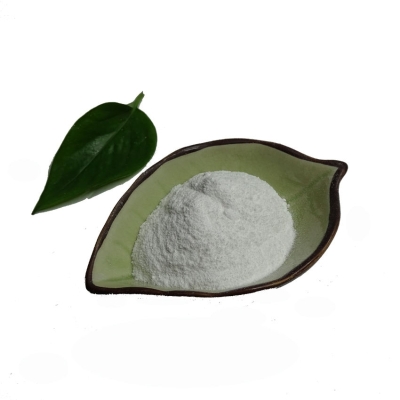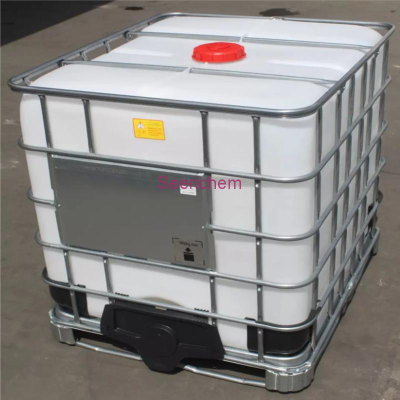-
Categories
-
Pharmaceutical Intermediates
-
Active Pharmaceutical Ingredients
-
Food Additives
- Industrial Coatings
- Agrochemicals
- Dyes and Pigments
- Surfactant
- Flavors and Fragrances
- Chemical Reagents
- Catalyst and Auxiliary
- Natural Products
- Inorganic Chemistry
-
Organic Chemistry
-
Biochemical Engineering
- Analytical Chemistry
-
Cosmetic Ingredient
- Water Treatment Chemical
-
Pharmaceutical Intermediates
Promotion
ECHEMI Mall
Wholesale
Weekly Price
Exhibition
News
-
Trade Service
In more than half of February, China's phosphate fertilizer market has weak support from downstream demand, and the decline is gradually emerging.
Specific to the monoammonium phosphate market, the price has gradually turned from a dark drop, while the diammonium phosphate market is priceless, and dealers rarely care about high-priced sources.
The “6+2” meeting of the phosphate fertilizer industry just concluded last week aimed at joint price-preservation and joint control of the prices of upstream sulfur and other raw materials.
However, the relevant agreement has just been signed.
Urea, which is the indicator of the fertilizer market, has ushered in the second wave of price declines after the year.
, A serious blow to the confidence of traders in the industry chain, and put pressure on the already shaky phosphate fertilizer market.
Based on this, there are still some people in the industry pining their hopes on the market conditions in the early stage of the two sessions of environmental protection surprise inspections, because since November last year, the price of phosphate fertilizer has risen all the way because of the policy level, environmental protection pressure, and the installation start down sharply until this year.
The lowest point coincides with the winter reserve of fertilizer, which is hard to find locally.
But things are counterproductive.
According to market feedback, up to now, phosphorus companies have not received relevant documents such as strict production restrictions or shutdowns.
Except for a few small factories that have not been reopened, large-scale enterprises have basically maintained a stable start of 60% to 70%.
Comprehensive consideration, the downward channel of phosphate fertilizer may have been opened.
The main considerations are as follows: 1.
The demand side continues to be negative.
The winter fertilizer reserve is coming to an end, the downstream compound fertilizer inquiries are weakened, and large factories have sufficient raw material inventories.
On the eve of the two sessions, the focus of environmental inspections will still be concentrated in Hebei, Henan, Shandong and other near-Beijing areas, and these areas are concentrated areas of compound fertilizer.
At that time, the shutdown of a small plant may become a high probability event, which will then affect its use of raw material monoammonium phosphate.
2.
After the beginning of the year, the start of installations has increased significantly.
After the end of the anti-haze environment control and the Spring Festival holiday, the domestic phosphate fertilizer plant started to increase significantly, and the output of large-scale enterprises increased significantly, which caused the contradiction of oversupply in the phosphate fertilizer field to reappear and restrained the price of ammonium.
3.
Although port source prices continue to report high prices, competition in the international market is fierce, and buyers continue to keep prices down.
Facing the rising Chinese market, some old customers switch to other low-priced sources, causing Chinese buyers to frequently lose orders.
Specific to the monoammonium phosphate market, the price has gradually turned from a dark drop, while the diammonium phosphate market is priceless, and dealers rarely care about high-priced sources.
The “6+2” meeting of the phosphate fertilizer industry just concluded last week aimed at joint price-preservation and joint control of the prices of upstream sulfur and other raw materials.
However, the relevant agreement has just been signed.
Urea, which is the indicator of the fertilizer market, has ushered in the second wave of price declines after the year.
, A serious blow to the confidence of traders in the industry chain, and put pressure on the already shaky phosphate fertilizer market.
Based on this, there are still some people in the industry pining their hopes on the market conditions in the early stage of the two sessions of environmental protection surprise inspections, because since November last year, the price of phosphate fertilizer has risen all the way because of the policy level, environmental protection pressure, and the installation start down sharply until this year.
The lowest point coincides with the winter reserve of fertilizer, which is hard to find locally.
But things are counterproductive.
According to market feedback, up to now, phosphorus companies have not received relevant documents such as strict production restrictions or shutdowns.
Except for a few small factories that have not been reopened, large-scale enterprises have basically maintained a stable start of 60% to 70%.
Comprehensive consideration, the downward channel of phosphate fertilizer may have been opened.
The main considerations are as follows: 1.
The demand side continues to be negative.
The winter fertilizer reserve is coming to an end, the downstream compound fertilizer inquiries are weakened, and large factories have sufficient raw material inventories.
On the eve of the two sessions, the focus of environmental inspections will still be concentrated in Hebei, Henan, Shandong and other near-Beijing areas, and these areas are concentrated areas of compound fertilizer.
At that time, the shutdown of a small plant may become a high probability event, which will then affect its use of raw material monoammonium phosphate.
2.
After the beginning of the year, the start of installations has increased significantly.
After the end of the anti-haze environment control and the Spring Festival holiday, the domestic phosphate fertilizer plant started to increase significantly, and the output of large-scale enterprises increased significantly, which caused the contradiction of oversupply in the phosphate fertilizer field to reappear and restrained the price of ammonium.
3.
Although port source prices continue to report high prices, competition in the international market is fierce, and buyers continue to keep prices down.
Facing the rising Chinese market, some old customers switch to other low-priced sources, causing Chinese buyers to frequently lose orders.







